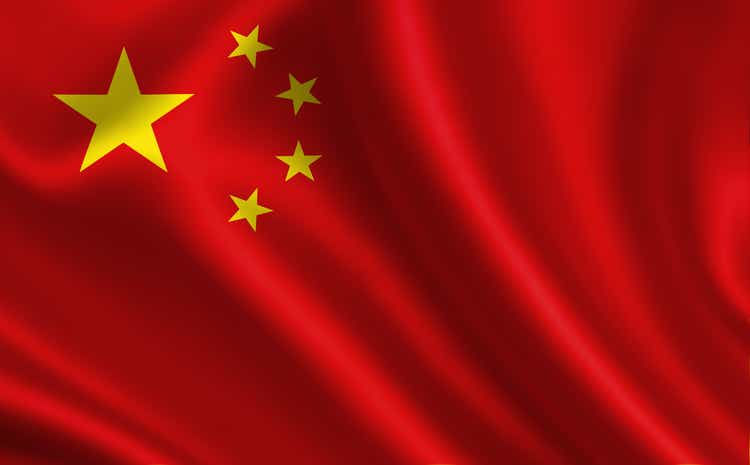Igor Ilnitckii
By William H. Witherell, Ph.D.
November saw strong advances in Chinese stocks, particularly in the final week. The US-listed SPDR S&P China ETF (GXC), for example, advanced 23.5% on a total return basis. This advance comes in what has been a very bad year for Chinese stocks.
International investors reduced their positions in Chinese equities substantially over the course of the year through October. Despite November’s surge, GXC ended the month still down 24.7% year-to-date. Are we now seeing the beginning of a sustainable recovery in Chinese stocks – or just a false dawn that is to be followed by further weakness?
There are several recent developments that lend support to a positive answer to this question. Following the unprecedented wave of protests across China, there are signs that Beijing is easing its zero-Covid policy. As this policy is closely identified with President Xi, we are unlikely to see an announcement of an about-face by the authorities.
Nevertheless, an easing of lockdown restrictions in Guangzhou, Beijing, and Shenzhen has been announced by local governments, apparently implementing a central government directive.
On November 30, Vice Premier Sun Chunlan, who implemented the severe spring lockdown in Shanghai, said that the Omicron variant was becoming “less pathogenic,” that is, less lethal, than other variants. She described to a health symposium plans for a major effort to vaccinate the elderly.
China’s path to moving to a state of “living with Covid” will take time. New cases are surging, and cities with high/mid-risk districts now account for about two-thirds of China’s GDP. The authorities understand that underinvestment in health care, including the limited numbers of ICU beds and ICU doctors, means the country is ill-prepared for a further surge in infections.
Vaccination rates for the elderly will have to be raised significantly to avoid a massive increase in deaths as restrictions are eased. Also, more effective vaccines will be essential. Several of the Chinese mRNA vaccines are close to final approval. (Note: The highly effective Moderna (MRNA) is an mRNA vaccine). The German BioNTech (BNTX) mRNA vaccine has already been approved for foreigners living in China.
These developments are important. While the zero-Covid policy was effective in countering the initial and Delta waves of Covid in China, the policy’s restrictive effects on the economy were a major cause of the growth slowdown, which continues to broaden according to recent data.
Harsher lockdown measures in the leadup to the 20th Party Congress hit both industrial production and retail sales. The threat of further lockdowns appears to have led to the hoarding of cash by both consumers and firms. A Chinese economic reopening in the coming months will depend on continued steps to improve Covid policies.
The distress in China’s property sector, with a string of debt repayment issues, has also contributed to the slowdown in the Chinese economy. The mass movement of the population into the cities, where now almost 70% live, led to a rapid expansion of the residential housing sector, fueled by unhealthy increases in debt.
The authorities recently announced some 16 measures aimed at giving policy support to property developers. These measures should help stabilize the situation and give some confidence to investors.
Prospects for a reopening of the Chinese economy have been increased by recent signs of improved relations between China and the US. The in-person meeting between President Biden and President Xi at the G-20 meeting, followed by ministerial-level contacts, and positive coverage of the encounters from both China and the US are noteworthy developments.
Also important is the agreement reached in August between the two countries to allow the US Public Company Accounting Oversight Board to inspect the audit accounts of Chinese firms. This agreement should assure investors that Chinese companies will be able to continue listing in the US.
In the commercial area, perhaps the biggest negative development between the two countries has been the increase in US export controls on semiconductors. The US referred to national security concerns when taking this action.
There are likely to be negative effects on Chinese companies and on some US companies as well. The regulatory actions by Chinese authorities, which hit some of the largest internet and other technology firms, appear to have slowed but are still a factor.
The two countries will continue to compete intensely in the commercial and technology spheres. On the geopolitical level, Taiwan and the South China Sea remain two potential flash points.
Considering the developments cited above and the current state of the Chinese economy, which appears to be bottoming out, prospects for a recovery to gain steam entering 2023 have strengthened considerably.
The central bank has made clear that its focus is on growth. China is one of the few countries where inflation is under control, which permits a continued accommodative monetary policy. Fiscal policy is also stimulative.
After slowing to a growth rate of just 3.3% this year, the Chinese economy is projected to advance at a 4.6% pace in 2023. While this growth rate still looks slow compared with recent history, it will be limited by the expected heavy headwinds for the global economy next year.
Global goods trade may even shrink in 2023. China and the Asian region look likely to have the most positive prospects, with the major emerging-market Asian economies projected to account for almost three quarters of global GDP growth next year.
The case for returning to investing in Chinese stocks is looking stronger. Valuations still look attractive despite the recent advances. High volatility is likely to remain, and unexpected events including governmental actions or new surges in Covid infections could send stocks reeling again. Investors need to monitor developments closely.
Neither Cumberland Advisors nor the writer hold the ETF mentioned above in their investments.
Sources: Financial Times, oecd.org, Oxford Economics, Barclays Research, The Economist, cnbc.com, kraneshares.com
Editor’s Note: The summary bullets for this article were chosen by Seeking Alpha editors.


Be the first to comment